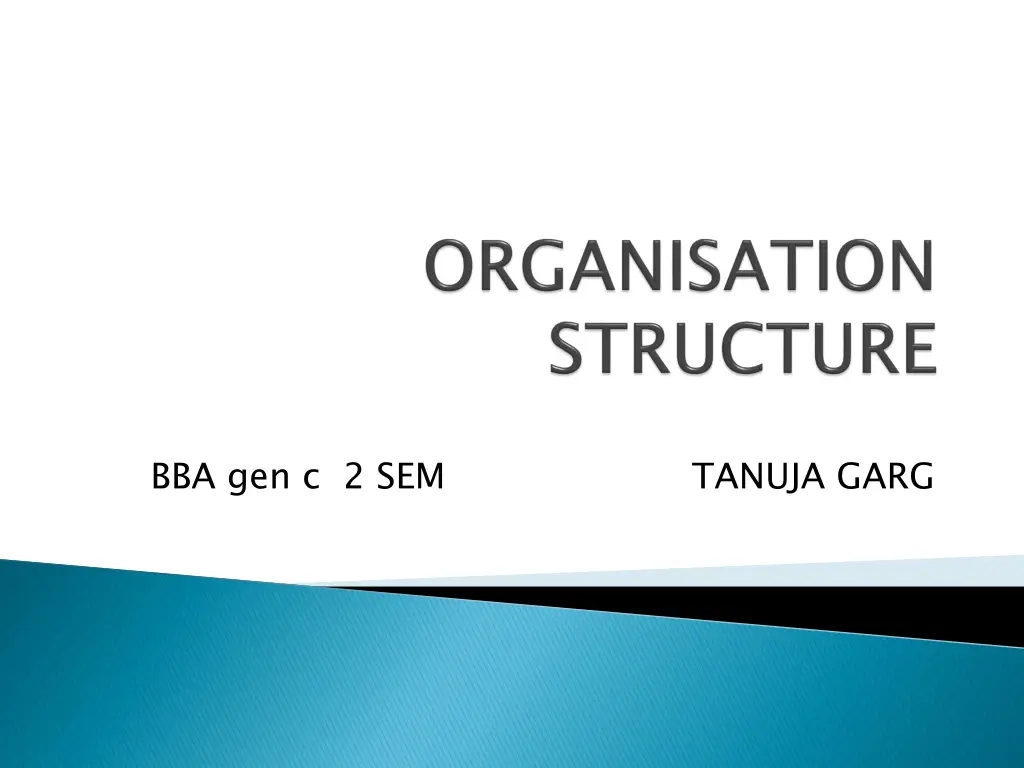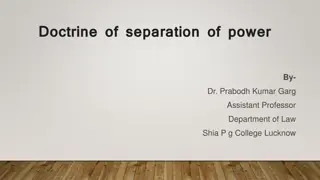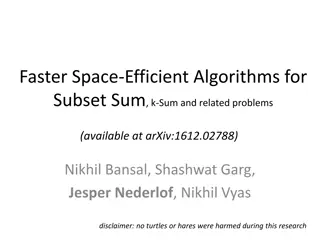
Understanding Organizational Behavior and Structure
Explore the study of human behavior in organizational settings and the importance of organizational structure in achieving goals. Learn about the features, merits, and potential drawbacks of well-designed organization structures. Enhance your knowledge of how organizational behavior impacts individual and group performance within a company.
Download Presentation

Please find below an Image/Link to download the presentation.
The content on the website is provided AS IS for your information and personal use only. It may not be sold, licensed, or shared on other websites without obtaining consent from the author. If you encounter any issues during the download, it is possible that the publisher has removed the file from their server.
You are allowed to download the files provided on this website for personal or commercial use, subject to the condition that they are used lawfully. All files are the property of their respective owners.
The content on the website is provided AS IS for your information and personal use only. It may not be sold, licensed, or shared on other websites without obtaining consent from the author.
E N D
Presentation Transcript
Organizational Behavior (OB) is the study of human behavior in organizational settings, the interface between human behavior and the organization, and the organization itself. Organizational behavior is the study of both group and individual performance and activity within an organization.
An organizational structure is a system that outlines how certain activities are directed in order to achieve the goals of an organization. These activities can include rules, roles, and responsibilities. The organizational structure also determines how information flows between levels within the company.
Features and characteristics of organization structure are: 1. It facilitates co-ordination of organizational activities and tasks. 2. In elaborates the hierarchical relationship among different levels of management within the organization. 3.. It facilitates the implementation of policies, practices, procedures, standards evaluation systems etc. that guide the activities and relationship among people in the organization. 4. It sates the activities and tasks assigned to different departments and people in the organisation.
Merits of having a well-designed organization structure are as follows: 1. The activities of the individuals and the groups will become more rational, stable and predictable. 2. An orderly hierarchy in which people are related in a meaningful sequence will result. Individual responsibility will be known clearly and the authority to act would be defined. 3. Individuals will be selected on the basis of ability to perform expected tasks. Simplification and specialization of job assignment is possible in more effective way. 4. Directional and operational goals and procedures will be determined clearly and energies devoted to their achievement. 5. Available resources will be utilized in the most effective way. 6. Such an organization may make the treatment of the individual.
1. Individual creativity and originality may be stifled by the rather rigid determination of duties and responsibilities. 2. Workers may become less willing to assume duties that are not formally a part of their original assignment. 3. Very often the fixed relationships and lines of authority seem inflexible and difficult to adjust to meet changing needs. 4. They produce anxiety in individual workers by pressing too heavily for routine and conformity. 5. They become too costly in terms of time and human dignity in order to implement organizational rules and regulations. 6. Inter-personal communication may be slowed or stopped as a result of strict adherence to formal lines of communication.
1. Line Organization 2. Line and Staff Organization 3. Functional Organization 4. Project Organization 5. Matrix Organization
1. Line Organisation: Line organisation is the simplest and oldest form of organisation structure. It is called as military or departmental or scalar type of organization. Under this system, authority flows directly and vertically from the top of the managerial hierarchy down to different levels of managers and subordinates and down to the operative level of workers. Line organisation clearly identifies authority, responsibility and accountability at each level. The personnel in Line organization are directly involved in achieving the objectives of the organization.
2.Line and Staff Organization: This of organization structure is in large enterprises. The function type all specialists are added to the line in line and staff organization. Mere, staff is basically advisory in nature and usually does not possess any command authority over line managers. Allen has defined line and staff organization as follows. Line functions are those which have direct responsibility for accomplishing the objectives of the enterprises and staff refers to those elements of the organization that help the line to work most effectively in accomplishing the primary objectives of the enterprises.
3. Functional Organisation: The functional organisation was evolved by F.W. Taylor while he was working as a foreman. He suggested eight foremen, four in factory and four in planning division as under. According to Terry, Functional organisation refers to the organisation which is divided into a number of functions such as finance, production, sales, personnel, office and research and development and each of functions are performed by an expert . Line authority, staff authority and functional authority as a third type of authority are in this type of organisation.
4. Project Organisation: This organisational structure are temporarily formed for specific projects for a specific period of time, for the project of achieving the goal of developing new product, the specialists from different functional departments such as production, engineering, quality control, marketing research etc., will be drawn to work together. These specialists go back to their respective duties as soon as the project is completed. Really, the project organisation is set-up with the object of overcoming the major weakness of the functional organisation, such as absence of unity of command, delay in decision- making, and lack of coordination.
5. Matrix Organisation: According to Stanley Davis and Paul Lawrence matrix organisation is any organisation that employs a multiple command system that includes not only the multiple command structure, but also related support mechanism and an associated organisational culture and behaviour pattern. A matrix organisation, also referred to as the multiple command system has two chains of command. One chain of command is functional in which the flow of authority is vertical. The second chain is horizontal depicted by a project team, which is led by the project, or group manager who is an expert in his team s assigned area of specialisation.








